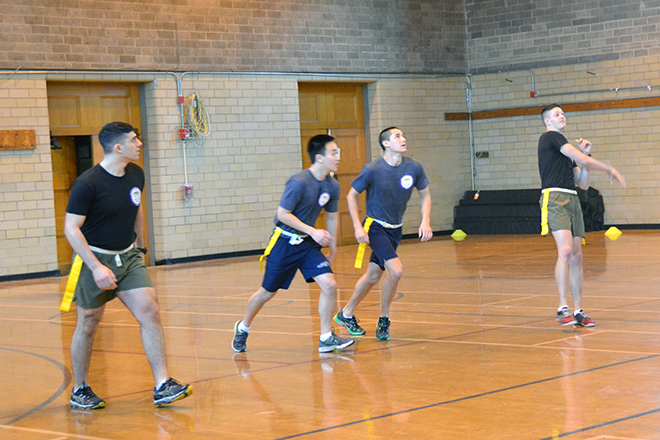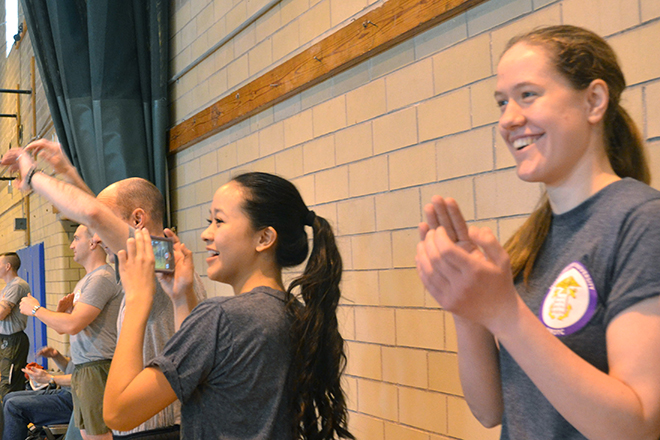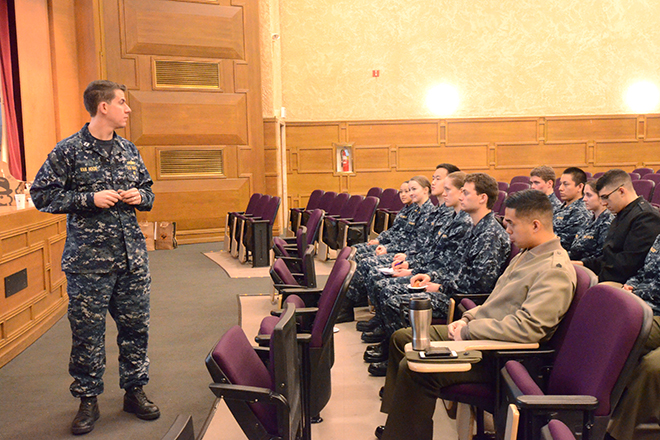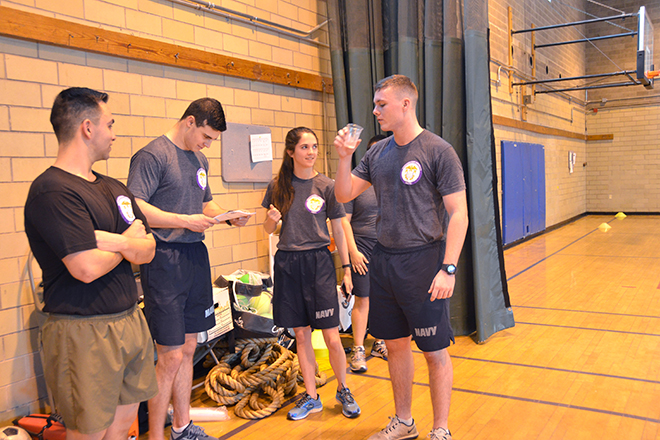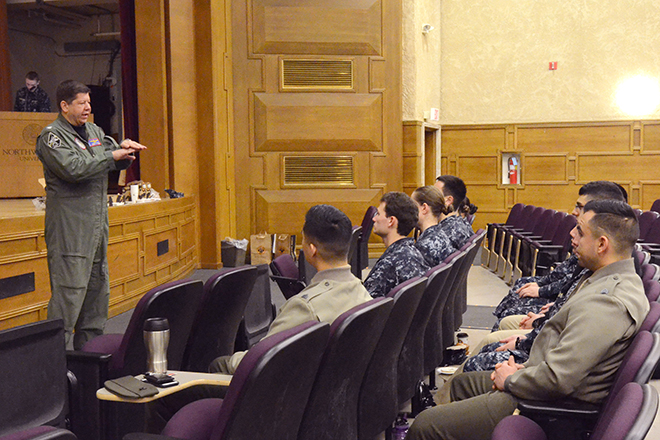Just a few hours after you’ve curled up in bed, there’s a group of students waking up for 6 a.m. physical training. Weinberg sophomore Michael Yi is one of them. Every Wednesday, he dons a blue and gray camouflage uniform and reports to Patten Gym for drill practice.
“You carry yourself differently from other students,” Yi says. “Everyone is watching you when you’re in uniform. Everyone knows you’re in ROTC, so you have to be at your best.”
These early risers are the members of Northwestern’s Naval Reserve Officers Training Corps (NROTC) program, called midshipmen within their unit. Northwestern’s ROTC program was established in 1926, and is one of the first six programs in the country. It has 23 midshipmen, including students from Loyola University in Chicago.
Yi’s decision to join NROTC was partly influenced by his family. His father was in the Navy, and his brother went to the Air Force Academy. Since he wants to serve on the medical side of the military, Yi chose to study on Northwestern’s pre-med track rather than attend the Naval Academy.
“One of my biggest values is wanting to serve,” says Yi. “This is a pretty awesome way to do that.”
Balancing college life and ROTC
Being in ROTC has motivated Weinberg freshman Olyvia Chinchilla to manage time better and work harder, both in academics and within ROTC. Although people may look at her and other students in ROTC differently when she wears the uniform every Wednesday, she believes being in ROTC has benefited her.“Leadership and discipline really attract me,” Chinchilla says. “The military defines me as a person and brings out my natural talents. The service aspect is important.”
Yi says ROTC has helped him become more disciplined in academics and time management, but because he often has to wake up early, he cannot always hang out with his friends late at night.
“You really have to be disciplined,” Yi says. “You can’t always go out whenever your friends go out. With academics, you have to be disciplined and get work done effectively and efficiently.”
Most students apply for the ROTC scholarship before entering college, and hear back from the program before getting decisions back from the universities that they have applied to. According to Captain Brian Koehr, the program's commanding officer, since the Navy deals with technical work such as nuclear power, most ROTC students major in science, technology, engineering and math fields.
“What we look for is, do they want to do it?” says Koehr. “Do they understand what they’re getting into? And all our students understand what they’re getting into, and they’re excited about it.”
However, some students also enter the program while in college. Weinberg freshman Matt Chorvot joined ROTC in the middle of the year. Before attending college, he had considered joining the military, but his parents were resistant to the idea.
“My ultimatum was that if I got into Northwestern, I would pursue an academic path,” Chorvot said. “I later figured out I could do both.”
Although he was nervous about the commitment, he does not regret his decision. Chorvot says it has improved his discipline and confidence, although he had to adjust to the routine of ROTC.
Opportunities and routines with ROTC
ROTC students have physical training at SPAC, Patten Gym or outdoors on Monday and Friday mornings, depending on the weather. For the first 10 minutes or so, they do warm-ups, and then calisthenics or cardiovascular exercises. Divided into squads, they race one another to finish their exercises – push-ups, burpees, sit-ups, planks and sprints.On Wednesdays, they do their drills in uniform. They break into a drill team and color guard team, practicing marching and movements, responding to commands and marching as a team. Color guard usually has five people, three with flags and two with rifles, and drill team usually has seven people, all with rifles.
After training and still in uniform, they attend lab and general military training. Labs begin with public speaking practice where each week a different student presents current events happening internationally, nationally, locally and within the unit. Koehr then addresses the unit with general announcements. Then the students learn about aspects of military service, such as physical fitness, safety, watch standing, leadership skills, ethics and moral behavior.
In addition to lab, ROTC students must take naval science courses to learn about military history, navigation, engineering, management, leadership and ethics.
“We’re here to protect America, and we’re trying to teach them what it takes to get ready to do that,” Koehr said. “We teach them how to make the right decision when something difficult comes up. We want them to make ethically correct decisions. To get here, we want them to get an education.”
When ROTC students graduate, they not only receive a diploma from Northwestern, they are either commissioned as an Ensign in the Navy or a Second Lieutenant in the Marine Corps. Students have various options, which include working with submarines, ships and aviation and joining the Navy or Marine Corps.
“They get a guaranteed job when they leave,” Surface warfare officer advisor Lieutenant G. Graham Van Hook says. “They have the opportunity to serve the country. They get the opportunity to travel and see the world. They have the opportunity to lead.”
